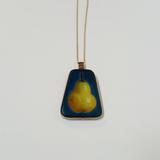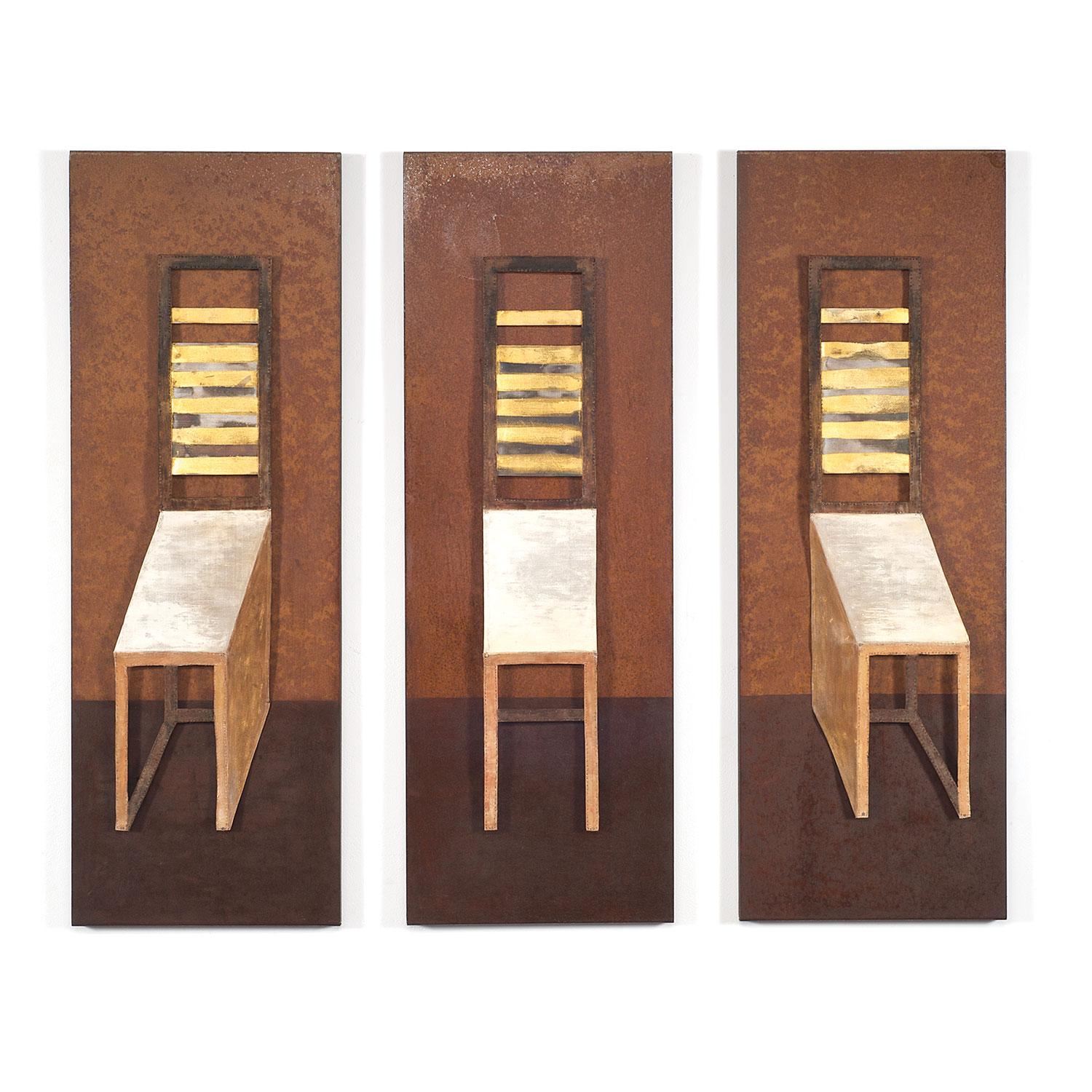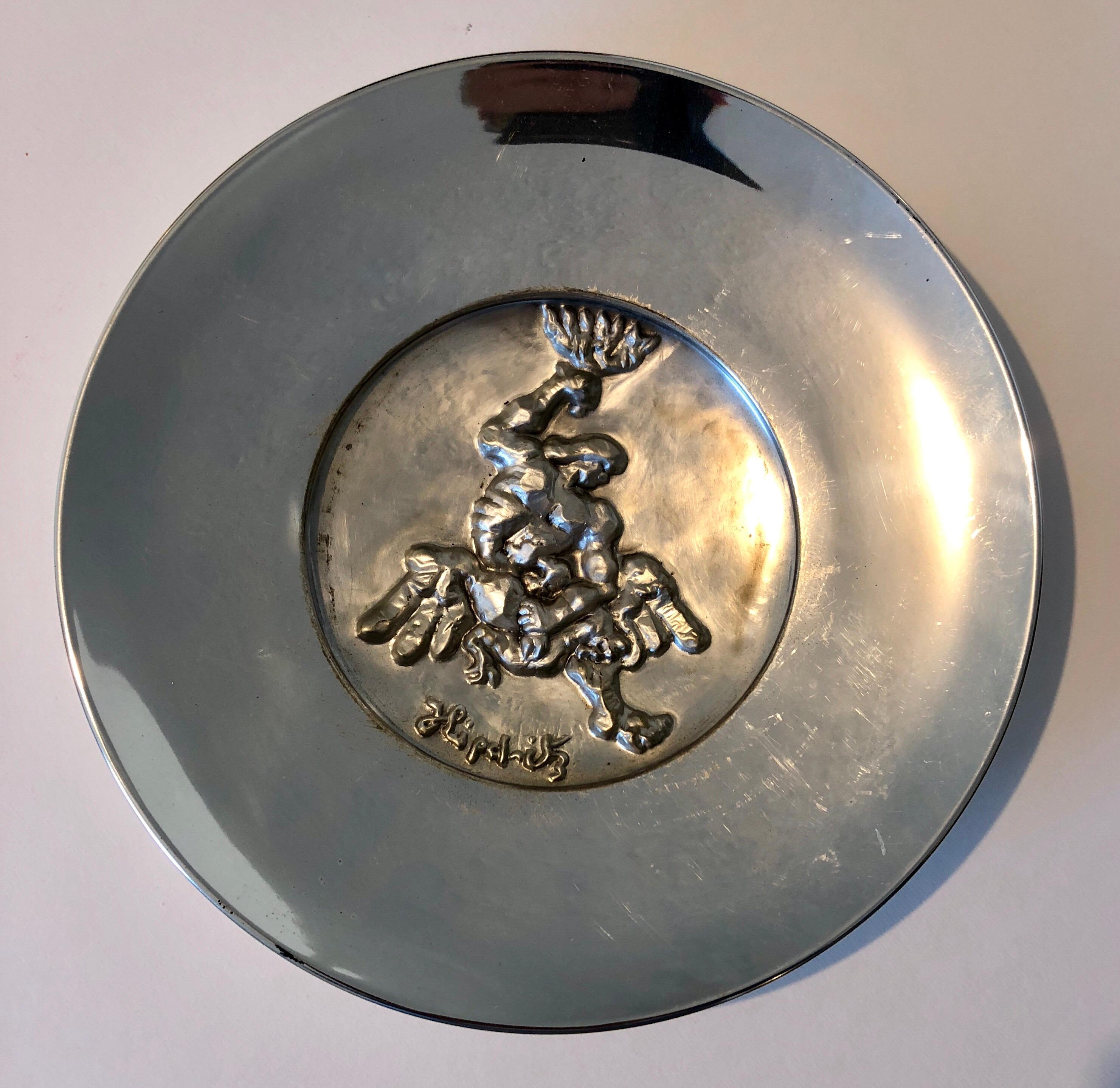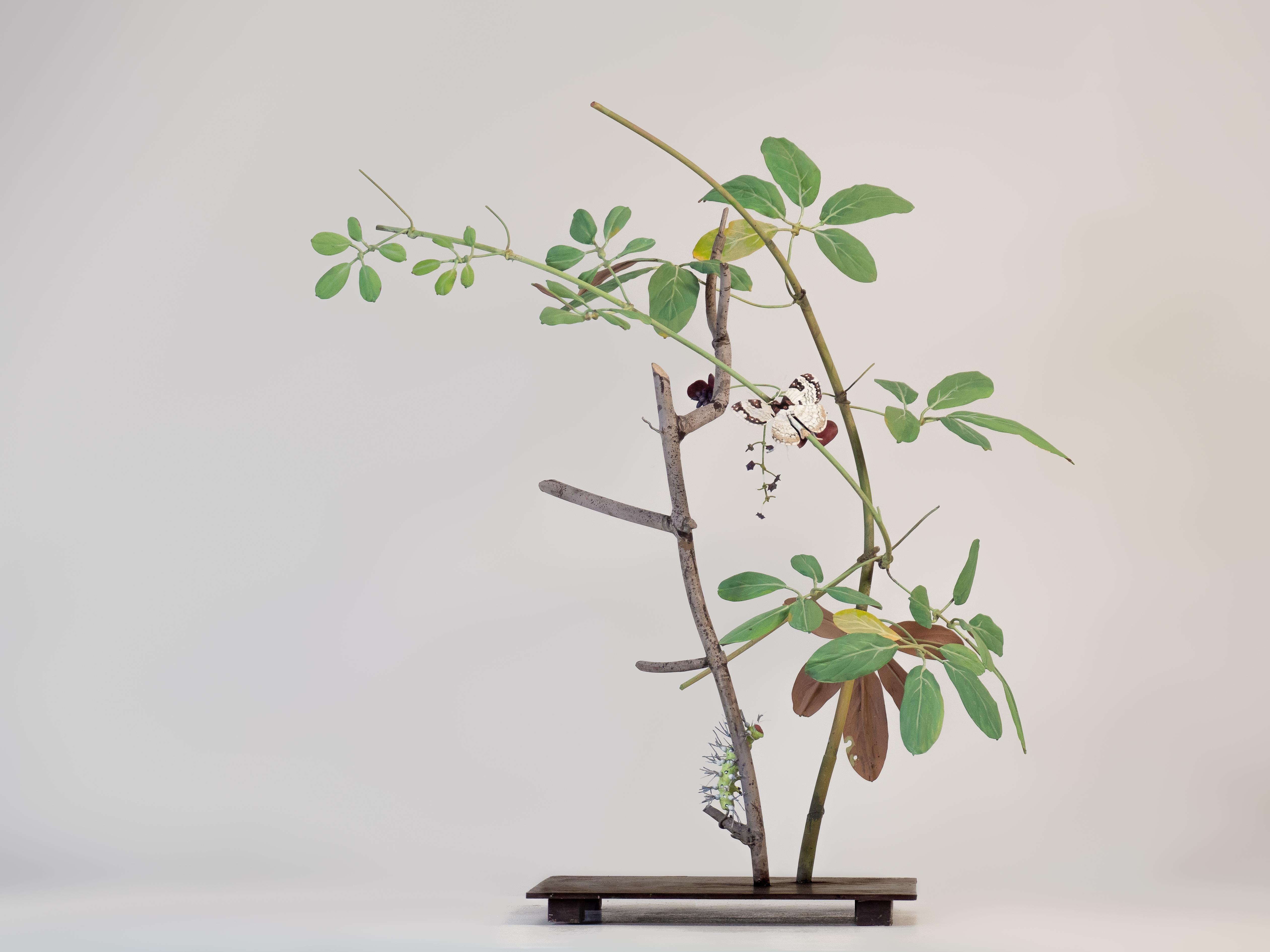Items Similar to Flower Pin (Tie Tack),
Want more images or videos?
Request additional images or videos from the seller
1 of 7
Robert KulickeFlower Pin (Tie Tack), 1962
1962
About the Item
ROBERT KULICKE (1924-2007)
Flower Pin (Tie Tack), 1962
Cloisonné enamel pin in silver setting
7/8 inches (diameter)
Signed, dedicated and dated verso: TO HM / RMK 62
(HM dedication is to Helen Motherwell a.k.a. Helen Frankenthaler)
PROVENANCE
Estate of Helen Frankenthaler
Robert Kulicke, noted frame maker and painter, was also an accomplished jeweler. Around 1970, Kulicke left Kulicke Frames, which was taken over by his wife, whom he divorced, and his father-in-law. In 1968, after years of experimenting, he perfected the goldsmithing technique of granulation. It had been widely used from antiquity to the 11th century and periodically revived by artisans who did not share its secrets. He began teaching the technique at the Scarsdale Studio Workshop School and then at the Kulicke Cloisonné Workshop, which he founded in his studio on Upper Broadway in New York. In 1974 he founded the Kulicke-Stark Academy with Jean Stark, his companion at the time. In 1984 the academy was renamed the Jewelry Arts Institute, and the jeweler Bessie Jamieson became the director.
Born in Philadelphia in 1924, Robert M. Kulicke attended the Tyler School of Art (Temple University) and the Philadelphia Museum School. In 1949, he studied in Paris with Fernand Leger at the Academie Leger, Paris. Davis & Langdale Company exclusively represented the work of Robert M. Kulicke beginning in 1974 and continues to represent the estate of the artist.
Robert M. Kulicke primarily painted still lifes, choosing a jar of olives, a bouquet of flowers and, his signature subject, the pear as his subjects. Intimate in scale, each painting is contained in a frame that was hand-made by Kulicke, based on designs found throughout framing history.
In 1951, he opened Kulicke Frames in New York City and socialized with Abstract Expressionist painters including Robert Motherwell and Franz Kline. They encouraged him to design thin frames that would not distract from their paintings.
Since 1974 Kulicke had an annual exhibition at the Davis & Langdale Company. He also had exhibitions at Museum of Art, The Pennsylvania State University (1978), John F. Warren, Philadelphia, Pennsylvania, (Color of Money: Robert Kulicke’s Dollar Bill Paintings, 1988), Columbia Museums of Art and Science, South Carolina (1983), and Campbell-Thiebaud Gallery, San Francisco (1991, 1994) and others.
In 1988 Kulicke was elected an Associate Member of the National Academy of Design.
- Creator:Robert Kulicke (1924-2007, American)
- Creation Year:1962
- Dimensions:Height: 0.88 in (2.24 cm)Width: 0.88 in (2.24 cm)
- Medium:
- Movement & Style:
- Period:
- Condition:
- Gallery Location:Concord, MA
- Reference Number:1stDibs: LU3541766913
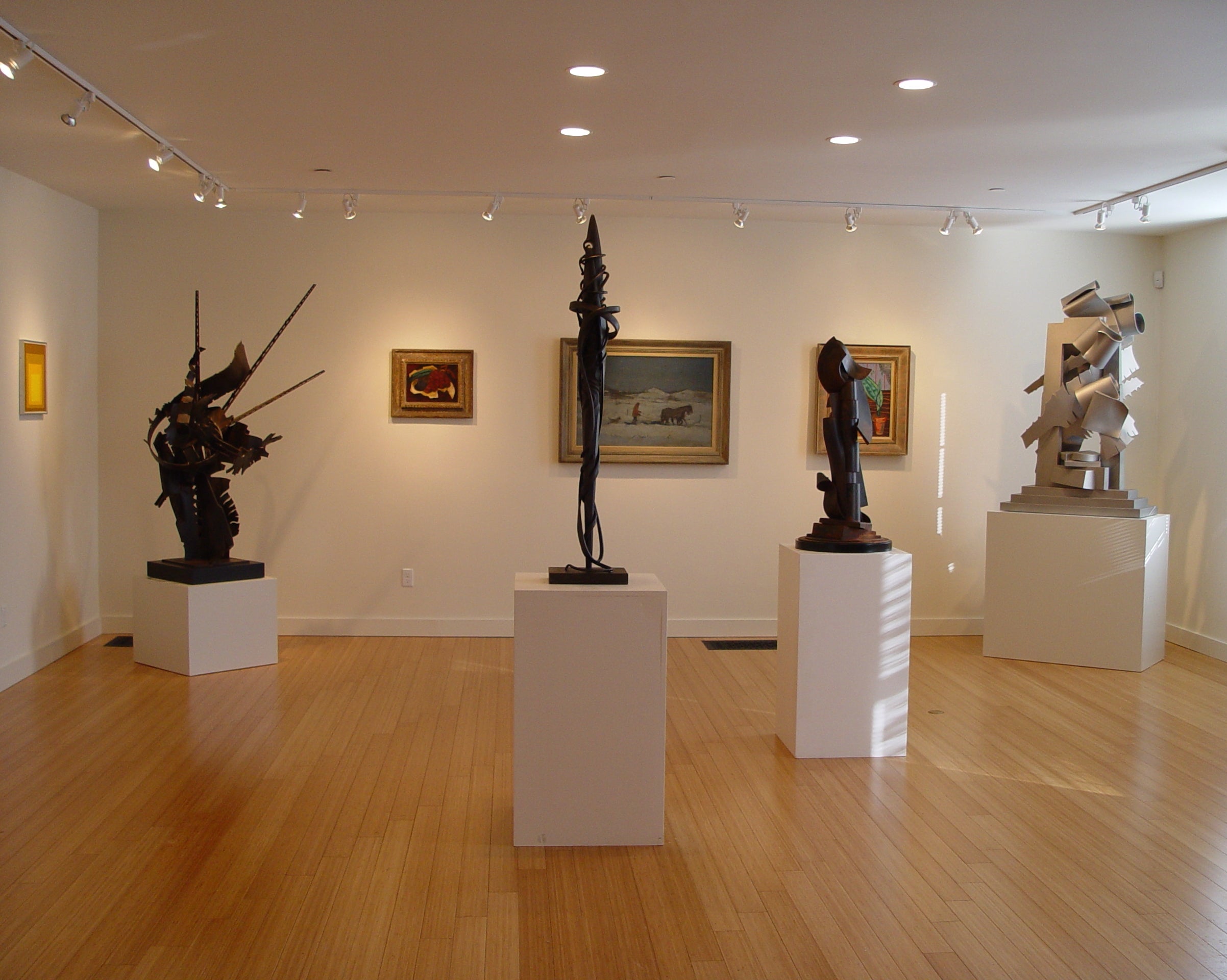
About the Seller
4.4
Vetted Seller
These experienced sellers undergo a comprehensive evaluation by our team of in-house experts.
Established in 1993
1stDibs seller since 2014
50 sales on 1stDibs
Typical response time: 4 hours
- ShippingRetrieving quote...Ships From: Concord, MA
- Return PolicyThis item cannot be returned.
More From This SellerView All
- Pear Pendant,By Robert KulickeLocated in Concord, MAROBERT KULICKE (1924-2007) Pear Pendant, 1966 Cloisonné enamel pendant in silver setting 1 ½ x 1 1/8 inches (enamel) Chain length: 12 inches Signed and da...Category
1960s Minimalist Still-life Sculptures
MaterialsSilver, Enamel
- To The Ultimate Do We Pursue The IdealBy Paul ManshipLocated in Concord, MAThis is an iteration of Paul Manship's medal that features the artist Barry Faulkner on the obverse, and the inscription of that version is marked "Barry Faulkner Painter MXMXV (1915...Category
1910s American Modern Nude Sculptures
MaterialsBronze
- Bursting the BoundsBy Donald De LueLocated in Concord, MAThis De Lue design was chosen as the 111th issue of the prestigious Society of Medalists series. Both obverse and reverse bear a muscular nude constrained by the rectangular medal's ...Category
1980s American Modern Nude Sculptures
MaterialsBronze
- Seated Nude WomanLocated in Concord, MALouis Bancel (1926-1978) Seated Nude Woman, n.d. Bronze 4 1/4 x 2 1/2 x 2 1/2 inches Signed: Bancel Numbered: 9/50Category
20th Century Modern Figurative Sculptures
MaterialsBronze
- DandelionBy Naomi SavageLocated in Concord, MANAOMI SAVAGE (1927-2005) Dandelion, c.1960 Photo-engraving with painted additions on copper 4 3/8 x 3 ½ inches (plate) Inscribed on the reverse: Naomi Savage / (BK) / 1960? Naomi Savage was born in Jersey City, New Jersey in 1927. From a very early age, Naomi was interested in the arts. Her mother encouraged her to pursue music, and as the niece of famous Dada and Surrealist painter, sculptor, and photographer, Man Ray, she was able to pursue her interests with much support from her family. During high school, Naomi attended a class taught by Bernice Abbott, Man Ray's assistant in the 1920’s, at the New School for Social Research. She later attended Bennington College, where she studied music and the arts. Shortly after college, she traveled to California to study and apprentice with her uncle, Man Ray. Ray was a great inspiration to the young Naomi; he encouraged her to let her imagination create her art. Savage said later in her life that her strongest inheritance enriching her artistic career came from her uncle, Man Ray. "I never forgot his insightfulness," she said. "With him you could try anything - there was nothing you were told not to do, except spill the chemicals. With Man Ray, you were free to do what your imagination conjured and that kind of encouragement was wonderful". In 1950, Naomi married painter, sculptor, and architect, David Savage. Shortly after, the couple moved to Lambertville, New Jersey, residing there for three years before moving to Princeton, New Jersey. She had her first exhibition in 1952 at the Museum of Modern Art in New York City, and exhibited there again in 1960, 1966, and 1968. Her work can now be seen in the permanent collections of the Museum of Modern Art in New York, the Museum of Fine Arts in Boston, the International Center of Photography in New York, the Art Institute of Chicago, the Fogg Museum at Harvard University, and the Noyes Museum in Oceanville, New Jersey. Savage pioneered the use of photographic engravings for which she is best known. With a photographic engraving, the actual metal photographic plate itself is the art. It is described as a kind of topographic photograph with forms in three dimensions and with a variety of metallic surfaces and tones. Some of her most famous photographic engravings involve a series of portraits of her sister, which she manipulated in countless ways over many years. But her most famous photographic engraving (perhaps her most famous work of all) is a fifty-foot long mural she did on the side of the Lyndon B. Johnson Library and Museum in Austin, Texas. Her approach to photography represents an involvement with process as medium, and an interest in art as image manipulation, a pursuit shared by contemporaries like Robert Heinecken, Betty Hahn, and Bea Nettles...Category
1950s American Modern Mixed Media
MaterialsCopper
- Classic FormBy Naomi SavageLocated in Concord, MANAOMI SAVAGE (1927-2005) Classic Form, c. 1970’s Line-cut photo-engraving on zinc-plated copper 9 ½ x 7 ½ inches (plate) Titled and inscribed on artists label verso: “Classic Form” / Collection- Eve Kraft / N.F.S. / Insurance value / $500.00 Artists label on the reverse reads: NAOMI SAVAGE / DRAKES CORNER ROAD / PRINCETON, NEW JERSEYT / PHOTOGRAPH BY / NAOMI SAVAGE Original Kulicke Lucite frame PROVENANCE Ex. Collection Eve Kraft N.F.S. Private collection, Princeton, New Jersey Naomi Savage was born in Jersey City, New Jersey in 1927. From a very early age, Naomi was interested in the arts. Her mother encouraged her to pursue music, and as the niece of famous Dada and Surrealist painter, sculptor, and photographer, Man Ray, she was able to pursue her interests with much support from her family. During high school, Naomi attended a class taught by Bernice Abbott, Man Ray's assistant in the 1920’s, at the New School for Social Research. She later attended Bennington College, where she studied music and the arts. Shortly after college, she traveled to California to study and apprentice with her uncle, Man Ray. Ray was a great inspiration to the young Naomi; he encouraged her to let her imagination create her art. Savage said later in her life that her strongest inheritance enriching her artistic career came from her uncle, Man Ray. "I never forgot his insightfulness," she said. "With him you could try anything - there was nothing you were told not to do, except spill the chemicals. With Man Ray, you were free to do what your imagination conjured and that kind of encouragement was wonderful". In 1950, Naomi married painter, sculptor, and architect, David Savage. Shortly after, the couple moved to Lambertville, New Jersey, residing there for three years before moving to Princeton, New Jersey. She had her first exhibition in 1952 at the Museum of Modern Art in New York City, and exhibited there again in 1960, 1966, and 1968. Her work can now be seen in the permanent collections of the Museum of Modern Art in New York, the Museum of Fine Arts in Boston, the International Center of Photography in New York, the Art Institute of Chicago, the Fogg Museum at Harvard University, and the Noyes Museum in Oceanville, New Jersey. Savage pioneered the use of photographic engravings for which she is best known. With a photographic engraving, the actual metal photographic plate itself is the art. It is described as a kind of topographic photograph with forms in three dimensions and with a variety of metallic surfaces and tones. Some of her most famous photographic engravings involve a series of portraits of her sister, which she manipulated in countless ways over many years. But her most famous photographic engraving (perhaps her most famous work of all) is a fifty-foot long mural she did on the side of the Lyndon B. Johnson Library and Museum in Austin, Texas. Her approach to photography represents an involvement with process as medium, and an interest in art as image manipulation, a pursuit shared by contemporaries like Robert Heinecken, Betty Hahn, and Bea Nettles...Category
1970s American Modern Figurative Photography
MaterialsCopper
You May Also Like
- "Three Chairs" Mixed Media Triptych, Modern Textile Wall HangingsBy Jin-Sook SoLocated in Wilton, CT"Three Chairs" (Triptych) steel mesh, gold, silver and background rust steel board, 35" x 42 1/2" x 2", 2010. This three-piece mixed media textile work was done by artist, Jin-Sook ...Category
2010s Modern Still-life Sculptures
MaterialsMetal, Gold, Silver, Steel
- The Struggle, Rare Sterling Silver Israeli Judaica Cubist Sculpture Plate PlaqueBy Jacques LipchitzLocated in Surfside, FLSculptor Jacques Lipchitz Terling Silver Anniversary Silver Sculpture Plate Israel This is a beautiful sterling silver commemorative plate. It was spec...Category
1970s Modern Figurative Sculptures
MaterialsSilver, Bronze
- Akebia with Saturnia CaterpillarBy Carmen AlmonLocated in New Orleans, LACarmen Almon uses copper sheeting, brass tubing, steel wire and enamel paint to create exquisite botanical sculptures. She captures the fragility of a moment in time by interpreting particular plants based on her memories of them. “These botanical compositions seem to defy their sheet-metal origins to come alive. Branches bend, vines loop, leaves twist, and a few surprising bugs, from butterflies to beetles, drop in to colonize her plants.” Through her work, one is reminded of the beautifully illustrated botanical books of the 17th and 18th century – Linneaeus, Ehret, Redouté – which Carmen often refers to for inspiration. Each piece takes up to twelve weeks to complete, therefore, few are realized each year making them rare treasures. In reference to our human connection to flowers, Carmen states, “Romance, marriage, funerals. Subconsciously, they represent so many things, innocent beauty, courage in the face of obstacles and continuity in the cycle of life and death. When I work on a plant, I am often thinking of this.” Almon grew up in Barcelona and Washington DC and resides in New Orleans, Louisiana. Her works are exhibited at the Chinese Porcelain Gallery, NY; and Octavia Art Gallery...Category
2010s Naturalistic Still-life Sculptures
MaterialsBrass, Copper, Enamel, Steel
- Watermelon with Morpho ButterflyBy Carmen AlmonLocated in New Orleans, LACarmen Almon uses copper sheeting, brass tubing, steel wire and enamel paint to create exquisite botanical sculptures. She captures the fragility of a moment in time by interpreting particular plants based on her memories of them. “These botanical compositions seem to defy their sheet-metal origins to come alive. Branches bend, vines loop, leaves twist, and a few surprising bugs, from butterflies to beetles, drop in to colonize her plants.” Through her work, one is reminded of the beautifully illustrated botanical books of the 17th and 18th century – Linneaeus, Ehret, Redouté – which Carmen often refers to for inspiration. Each piece takes up to twelve weeks to complete, therefore, few are realized each year making them rare treasures. In reference to our human connection to flowers, Carmen states, “Romance, marriage, funerals. Subconsciously, they represent so many things, innocent beauty, courage in the face of obstacles and continuity in the cycle of life and death. When I work on a plant, I am often thinking of this.” Almon grew up in Barcelona and Washington DC and resides in New Orleans, Louisiana. Her works are exhibited at the Chinese Porcelain Gallery, NY; and Octavia Art Gallery...Category
2010s Naturalistic Still-life Sculptures
MaterialsBrass, Copper, Enamel, Steel
- Valerian with Spice Bush SwallowtailBy Carmen AlmonLocated in New Orleans, LACarmen Almon uses copper sheeting, brass tubing, steel wire and enamel paint to create exquisite botanical sculptures. She captures the fragility of a moment in time by interpreting particular plants based on her memories of them. “These botanical compositions seem to defy their sheet-metal origins to come alive. Branches bend, vines loop, leaves twist, and a few surprising bugs, from butterflies to beetles, drop in to colonize her plants.” Through her work, one is reminded of the beautifully illustrated botanical books of the 17th and 18th century – Linneaeus, Ehret, Redouté – which Carmen often refers to for inspiration. Each piece takes up to twelve weeks to complete, therefore, few are realized each year making them rare treasures. In reference to our human connection to flowers, Carmen states, “Romance, marriage, funerals. Subconsciously, they represent so many things, innocent beauty, courage in the face of obstacles and continuity in the cycle of life and death. When I work on a plant, I am often thinking of this.” Almon grew up in Barcelona and Washington DC and resides in New Orleans, Louisiana. Her works are exhibited at the Chinese Porcelain Gallery, NY; and Octavia Art Gallery...Category
2010s Naturalistic Still-life Sculptures
MaterialsBrass, Copper, Enamel, Steel
- Dandelion with Honey BeeBy Carmen AlmonLocated in New Orleans, LACarmen Almon uses copper sheeting, brass tubing, steel wire and enamel paint to create exquisite botanical sculptures. She captures the fragility of a moment in time by interpreting particular plants based on her memories of them. “These botanical compositions seem to defy their sheet-metal origins to come alive. Branches bend, vines loop, leaves twist, and a few surprising bugs, from butterflies to beetles, drop in to colonize her plants.” Through her work, one is reminded of the beautifully illustrated botanical books of the 17th and 18th century – Linneaeus, Ehret, Redouté – which Carmen often refers to for inspiration. Each piece takes up to twelve weeks to complete, therefore, few are realized each year making them rare treasures. In reference to our human connection to flowers, Carmen states, “Romance, marriage, funerals. Subconsciously, they represent so many things, innocent beauty, courage in the face of obstacles and continuity in the cycle of life and death. When I work on a plant, I am often thinking of this.” Almon grew up in Barcelona and Washington DC and resides in New Orleans, Louisiana. Her works are exhibited at the Chinese Porcelain Gallery, NY; and Octavia Art Gallery...Category
2010s Naturalistic Still-life Sculptures
MaterialsBrass, Copper, Enamel, Steel
